| What is the new H-1B visa fee? |
| Who is required to pay the fee? |
In a major development that will reshape the U.S. immigration landscape, the Trump administration recently announced a substantial new fee for H-1B visa applications. Introduced through an executive order signed on September 19th, 2025, this new $100,000 fee applies to new H-1B petitions and has raised concern, confusion and intense discussion among employers, potential applicants and immigration experts alike. In this blog, we’ll break down what this new fee is, who is affected, and what the potential implications are for employers, H-1B visa holders and the broader U.S. labor market. By understanding the details, stakeholders can make informed decisions about hiring, visa planning and alternative strategies for bringing skilled talent into the country.
What is the new H-1B visa fee?
The new fee is a $100,000 charge imposed on employers for each new H-1B visa application. Unlike annual fees or recurring costs, this fee is a one-time payment required at the time of filing the visa petition. Importantly, this is in addition to the existing H-1B filing fees, which can range from $1,000 to $2,500 depending on the type of petition and employer category.
The administration’s stated purpose for the fee is to curb perceived abuses in the H-1B visa program. Over the years, there have been complaints that the program is sometimes used to replace American workers with lower paid foreign employees, despite the H-1B visa being intended for highly skilled professionals. The new fee is framed as a tool to reinforce the program’s original goal: attracting highly skilled, well compensated foreign workers to the United States.
In addition, the executive order directs the Department of Labor to begin a rulemaking process aimed at raising prevailing wage levels. The goal here is to ensure that the H-1B program continues to prioritize top talent with competitive pay, rather than functioning as a cost-saving mechanism for some employers.
Who is required to pay the fee?
One of the most important clarifications provided after the initial announcement is that the fee applies to employers, not individual H-1B visa holders. This distinction is critical, as the fee is intended to influence hiring decisions at the organizational level rather than penalize the visa beneficiaries themselves.
The fee applies only to new H-1B visa petitions filed after September 21st, 2025, which means that many current H-1B holders and ongoing petitions are exempt. Here’s a detailed breakdown:
(a) Current H-1B holders:
Individuals who already have an H-1B visa are not affected by this new rule. If a petition has been filed or approved prior to the effective date of September 21st, 2025, no additional fee will be charged. This means that people already living and working in the U.S. on valid H-1B status can continue their employment without worrying about retroactive costs or sudden unexpected financial burdens.
(b) Renewals and extensions:
H-1B visa holders who are applying for a renewal or an extension of their current status are specifically exempt from this fee. The executive order clarifies that the $100,000 payment is only required for new petitions, not for maintaining ongoing employment. This provides some stability for current visa holders and their employers, who can continue operations without the fear of additional, steep financial obligations.
(c) Travelers with existing H-1B visas:
Those who already hold a valid H-1B visa stamp in their passport and possess an accompanying approval notice can still travel freely in and out of the United States without incurring the new fee. As long as the visa stamp and approval are valid, re-entry is permitted under the existing terms. This ensures that professionals who need to travel internationally for work, family, or personal reasons are not penalized by the updated fee structure
This means the fee primarily impacts employers seeking to hire new H-1B employees or file new petitions for individuals outside the U.S. who plan to enter on an H-1B visa. For example, it will significantly affect those applying for the 2026 H-1B cap lottery, which typically opens for registration in March and conducts the lottery in early April.
Who Is likely exempt ?
While the general rule is clear, there may be additional exemptions for certain categories of employees or industries considered to be in the national interest. However, these exceptions have not been clearly defined yet, and further guidance from the White House or Department of Labor will be needed to clarify which cases might qualify.
(a)Implications for employers:
The introduction of this new fee represents a dramatic financial consideration for employers, particularly smaller firms, startups, and non-profits. Let’s break down the potential impact:
I. Large technology companies
Companies such as Amazon, Google, Apple, and Microsoft may be able to absorb the additional cost. For these organizations, the $100,000 fee may be significant but manageable, and they will likely factor it into their overall hiring budgets.
II. Small and medium-sized businesses
For smaller companies or startups, this fee can be prohibitive. Many of these organizations depend on H-1B workers to fill highly specialized roles, and a $100,000 cost per new hire can significantly limit their ability to compete for top talent. Nonprofits and research organizations may face similar challenges.
III. Impact on hiring decisions
Employers may become more selective in submitting H-1B petitions. Some companies might delay hiring or turn to alternative work-authorized talent pools such as F-1 OPT candidates, other visa types, or domestic hires.
(b) Implications for H-1B applicants:
For prospective H-1B visa holders, the new fee may create both direct and indirect consequences:
I.Access to opportunities:
Many talented foreign professionals, including recent graduates from U.S. universities, may find fewer employers willing to sponsor them due to the cost barrier.
II.Potential shift toward merit-based selection:
Some experts speculate that this fee accelerates a move away from the current lottery system toward a more merit-based system that favors highly skilled, high-paid applicants. While this benefits senior professionals, it may disadvantage early-career workers.
III.International alternatives:
Facing higher barriers in the U.S., many skilled professionals may look to other countries such as Canada, which has a more welcoming immigration system and does not impose such high fees. As this contributes to a “brain drain”, where top talent bypasses the U.S. entirely.
Practical Considerations for Employers and Applicants
Given the substantial nature of this fee and its sweeping implications, legal challenges are expected. Historically, presidential proclamations affecting immigration policy have sometimes been enjoined by federal courts, with the cases eventually moving up to circuit courts or even the U.S. Supreme Court.
If legal action succeeds, the fee might be delayed, modified, or overturned. However, as of now, the rule is in effect, and employers considering new H-1B petitions will need to plan accordingly.
Given the complexity and financial weight of the new fee, employers and applicants should carefully consider their options:
(1) Employers should assess financial impact :
Companies planning to hire new H-1B employees must account for the $100,000 fee per applicant. This may involve revising hiring strategies, prioritizing critical roles, or exploring other visa categories. For larger organizations it may mean recalculating budgets to accommodate the additional expense, while for smaller firms, the cost may lead to tough choices such as delaying recruitment or limiting the number of international hires they can realistically pursue.
(2) Consider timing and eligibility
Since the fee applies to new petitions filed after September 21st, 2025, employers may want to explore filing strategies that maximize timing advantages or take advantage of exemptions that may apply to certain employees. Careful planning around the H-1B lottery dates and deadlines will be essential, as will staying up to date with potential changes to the law. Employers who act early and align their petitions strategically may be able to minimize disruption and avoid unnecessary expenses.
(3) Explore alternative visa options
Options such as L-1 intracompany transfers, O-1 visas for extraordinary ability, or F-1 OPT extensions may become more attractive for both employers and candidates. By leveraging these alternatives, companies can continue accessing skilled global talent without facing the financial strain of the new H-1B fee. While these visa categories come with their own eligibility requirements, they may serve as viable solutions for organizations unable to justify the higher cost of H-1B sponsorship.
(4) Legal consultation
Consulting experienced immigration attorneys will be crucial to navigate the new landscape, understand exemption and plan strategically for both employees and the organization. Legal experts can help employers evaluate whether the $100,000 fee applies in specific cases, explore creative solutions and prepare petitions that stand the best chance of success. For employees, legal guidance can provide clarity on career pathways, alternative visa opportunities and long term immigration planning in light of this policy change.
Broader implications for the U.S. labor market
This new fee may have ripple effects beyond individual employers and visa holders:
(a). Talent acquisition challenges:
Companies dependent on international talent may face difficulties filling key positions, potentially slowing innovation and growth. Startups and mid sized businesses, which rely on H-1B workers for specialized technical skills, could be hit hardest. Without affordable access to global talent, many firms may struggle to maintain competitiveness, develop cutting edge products or expand into new markets, leading to long term ripple effects across industries.
(b). Shifts in global talent flows:
Highly skilled professionals may increasingly consider immigration to countries with lower barriers and more predictable processes. For example, Canada, Australia and parts of Europe have more straightforward immigration pathways for skilled workers. This could create a significant “brain drain” away from the U.S. redirecting talent pipelines to regions that actively court and retain foreign professionals, weakening America’s position as a global leader in innovation.
(c). Changes to the H-1B program itself:
This fee will reinforce a merit-based approach, emphasizing high wages and specialized skill sets, which aligns with the program’s original intent but may narrow opportunities for newer entrants to the workforce. While experienced professionals with advanced degrees may still find sponsorship opportunities, early career graduates or entry level workers could be excluded. Over time, this may reshape the demographics of the H-1B workforce, favoring elite candidates over diverse skill sets.
Preparing for the future
The H-1B visa program has long been a critical pathway for bringing skilled professionals to the United States. This new $100,000 fee represents a significant policy shift that changes employer behavior, applicant eligibility and overall talent flows.
For employers, careful planning, budgeting, and legal guidance are more important than ever. For applicants, understanding how this fee affects potential sponsorship opportunities is essential to making informed career and migration decisions.
While the long term effects remain uncertain, staying informed, being proactive and consulting with experts can help navigate this rapidly evolving landscape.
The new $100,000 H-1B visa fee marks one of the most dramatic shifts in U.S. immigration policy in recent years. It is designed to reinforce the original intent of the program to bring highly skilled, well compensated professionals to the United States but comes with significant financial and strategic implications.
Employers must carefully evaluate their hiring strategies and consider potential alternatives, while prospective H-1B applicants should remain aware of how this change may impact their career plans. Legal challenges may yet influence the outcome, but the immediate effect is clear: this fee will shape the future of H-1B sponsorship and alter the U.S. labor market in profound ways.
At the Law Office of Gregory J. Eck, we assist professionals and employers in anticipating complex immigration challenges and preparing H-1B petitions that can withstand scrutiny even under the new $100,000 fee requirement. An RFE is not required to halt your immigration strategy and with careful planning, strategic petition preparation, and timely consideration of exemptions or alternative visa options, the process can often proceed smoothly.
For more information, visit www.gregecklaw.com


